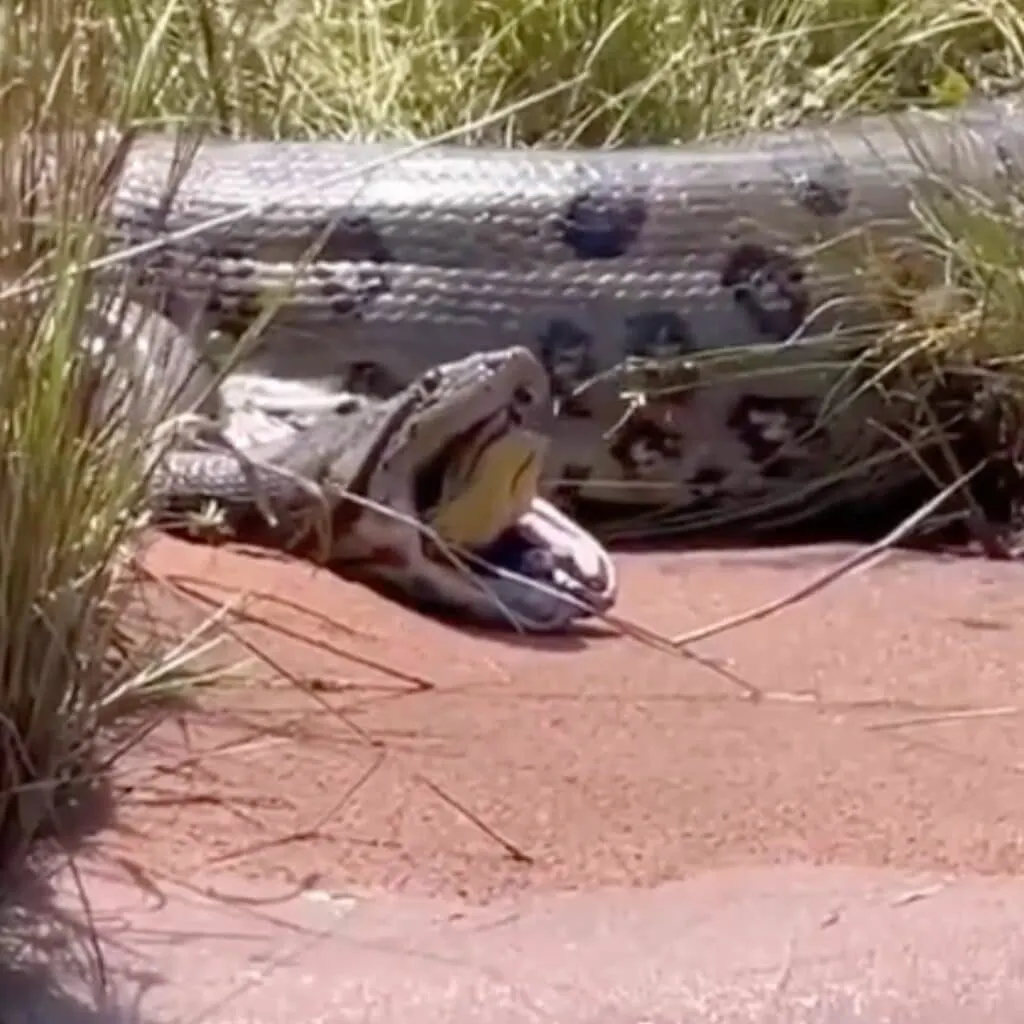An anaconda can be seen regurgitating a smaller anaconda in this incredible footage.

Anacondas, predators of the South American waters, often strike fear into the hearts of those who encounter them. With their imposing size and exceptional hunting prowess, they are one of nature’s most formidable predators.
A recent video offering a rare glimpse into an anaconda’s feeding behavior takes this fascination to a whole new level! The video shows an anaconda regurgitating another, smaller anaconda, which incredibly survives to tell the tale.
In this article, we delve into the intricate world of the anaconda. We will explore its unique hunting techniques and how it deploys a deadly hug to kill its prey. You’ll also learn about the surprising efficiency of the anaconda’s digestive system!
Prepare for a journey into the wild as we unravel the astonishing secrets of the anaconda! You can jump ahead to any section of your choice below:
Key Points
- An anaconda regurgitating a smaller anaconda, miraculously still alive, was captured on camera.
- Anacondas are large snakes that live in South America, preying on a diverse range of animals.
- They employ an ambush hunting strategy, striking quickly and constricting prey until suffocation.
- Anacondas can apply around 90 psi of pressure when constricting their prey, akin to three average-sized men’s weight.
- Their slow digestion allows them to fully utilize nutrients from prey, sustaining them for weeks or months.
- Cannibalism, while rare, does occur among snakes due to factors like food scarcity and size disparity.
A Brief Introduction to the Anaconda
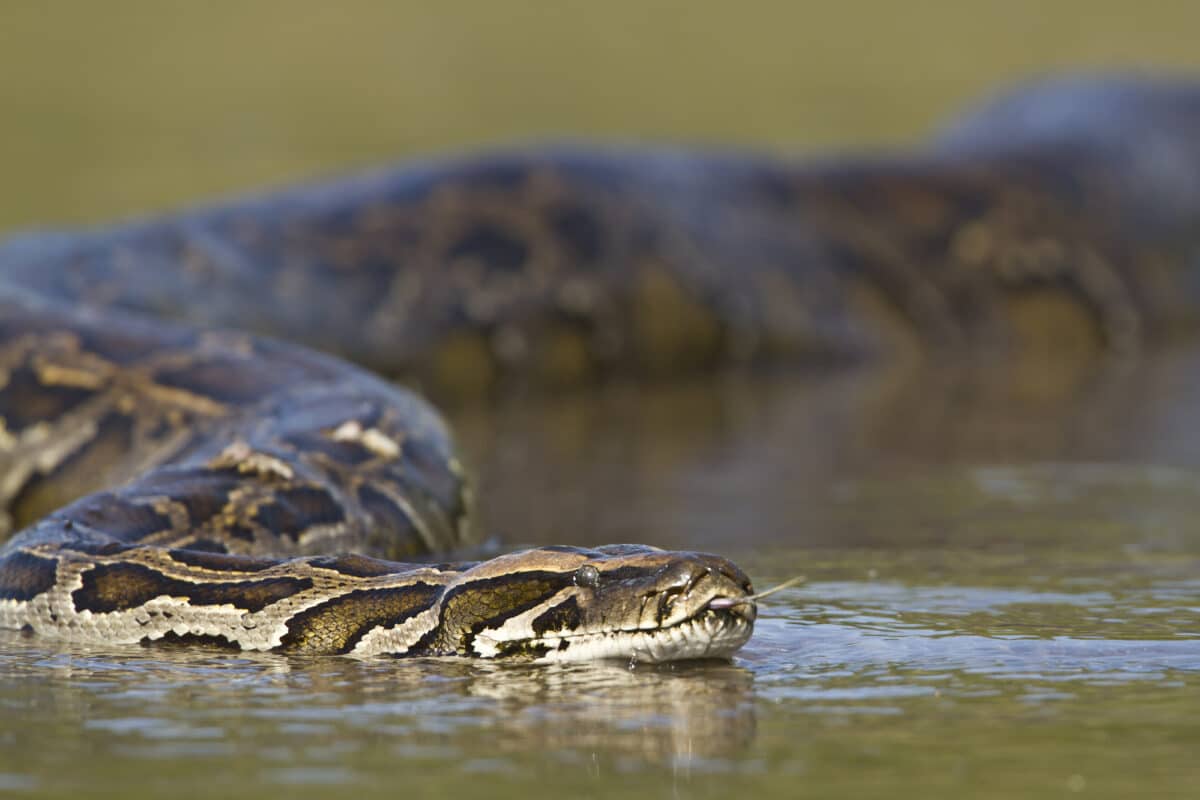
| Attribute | Information |
|---|---|
| Length | 15 – 29 feet (depending on the species) |
| Weight | 130 – 550 lbs pounds (depending on the species) |
| Diet | Carnivorous – Includes capybaras, caimans, turtles, deer, and other small to medium mammals |
| Hunting Technique | Ambush Predator – Uses constriction to kill prey |
| Habitat | Freshwater environments such as rivers, marshes, and swamps |
| Geographic Range | South America – Amazon and Orinoco river basins for Green Anacondas; Southern regions for Yellow Anacondas |
| Level of Danger | Low to Humans – Usually avoid humans unless provoked |
| Conservation Status | Green Anaconda: Not evaluated Yellow Anaconda: Least Concern |
The Anaconda’s Feeding Habits
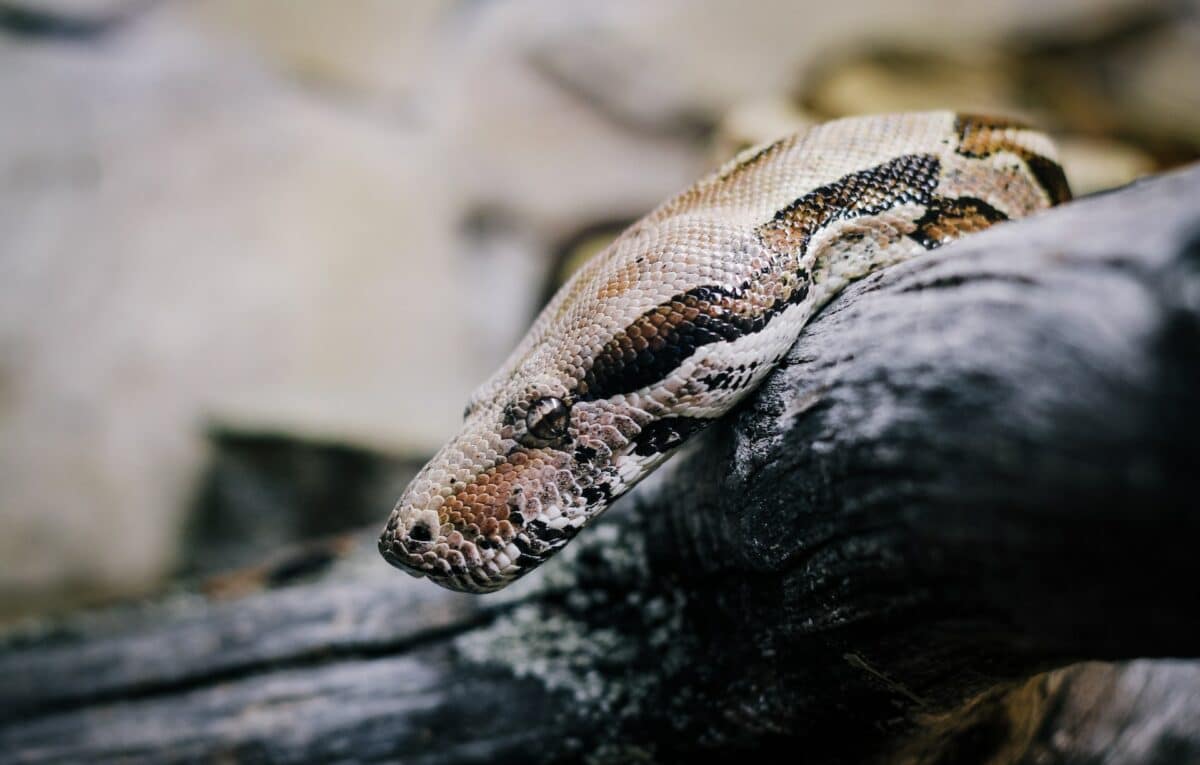
The anaconda’s ability to devour prey significantly larger than themselves makes them one of nature’s most terrifying predators. Let’s take a look at their diet and lethal hunting techniques.
Diet
Anacondas, being one of the world’s largest snakes, have a voracious appetite to match their impressive size. Their diet is extremely diverse, consisting largely of wild game found in their South American habitat. This includes animals such as capybaras, tapirs, deer, caimans, and even turtles. Their jaws are specially designed to stretch wide. This allows them to swallow prey that is significantly larger than their head.
Hunting Techniques
Anacondas, with their immense size and strength, are highly successful predators. They have adapted to employ an ambush hunting strategy, blending in with their surroundings until an unsuspecting prey comes within striking distance. Being excellent swimmers, they often lie in wait in water bodies, exposing only their nostrils and eyes on the surface.
Once a target comes into range, the anaconda will strike with remarkable speed for its size, gripping the prey with its sharp, rear-facing teeth. Thanks to their design, these teeth are can hook into the prey and prevent escape. However, this is not how it kills its prey. The anaconda is a constrictor, meaning it kills its prey by suffocating it rather than delivering venom.
Constrictor: The Hug That Kills You
The predatory anaconda kills its prey by suffocating them. After securing a grip on the prey, the anaconda swiftly coils its powerful body around the prey and constricts. With each exhale of the prey, the snake tightens its grip, making inhalation progressively difficult until the prey ultimately succumbs.
The force an anaconda can exert is astonishing. It’s estimated that they can apply pressure of around 90 psi (pounds per square inch), equivalent to the weight of three average-sized human males. Considering this, it’s difficult to comprehend how the smaller anaconda survives after being regurgitated.
Digesting Whole Animals
Once the prey is engulfed, the anaconda’s potent digestive system comes into play. A cocktail of strong stomach acids and enzymes starts to break down the prey, effectively digesting everything from bones and teeth to feathers and fur. This comprehensive digestive process is a testament to the snake’s efficiency, allowing it to utilize as much nutrition as possible from its catch.
Their digestion, however, is slow. It can take days or even weeks to fully digest a large meal. This leisurely pace is due to their slow metabolism, another key survival adaptation. This slow metabolic rate means the energy and nutrients derived from a single meal can sustain an anaconda for a long time, often weeks or even months.
The Video: Anaconda Regurgitates a Smaller One
The video begins by showing an exceptionally large anaconda lying near a water body. It is clear that the anaconda is well-fed, judging by its unusually huge size.
Suddenly, we see how the snake starts to regurgitate its most recent meal. However, the prey it regurgitates is not what you’d expect – it’s another, smaller anaconda! Not only is the prey of the same species as the predator, it is also miraculously still alive.
The smaller snake, appearing somewhat disoriented, begins to move toward the nearby water. Despite its recent ordeal inside the larger snake, it appears determined to get away. Eventually, the smaller anaconda reaches the water and slips in, managing to escape.
It’s unclear whether the larger anaconda mistook its prey for something else, or perhaps its stomach was already at full capacity. Either way, it was Anaconda Junior’s lucky day!
Another freaky occurrence in nature: Alligator Tries To Eat Stork But Gets Eaten By Crocodile.
Cannibalism In Snakes
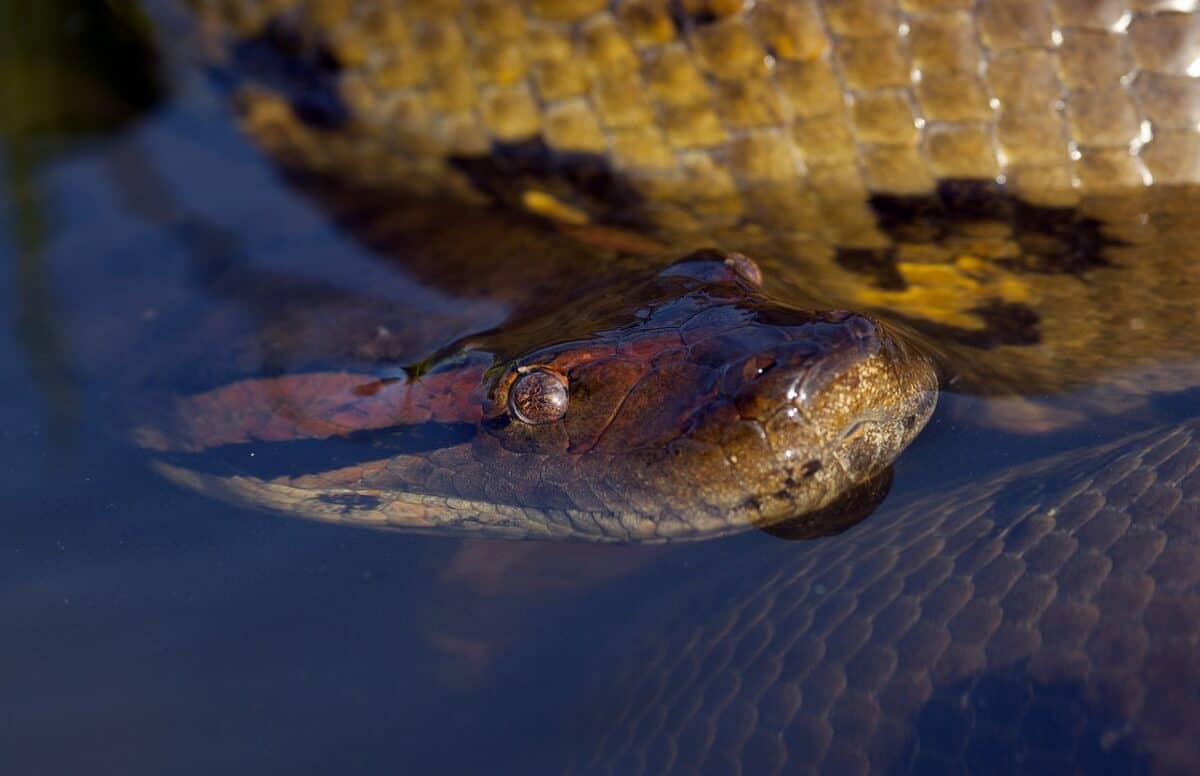
Cannibalism, while not the norm, does occur in several snake species. Factors like food scarcity, size disparity, and, in some cases, reproduction generally influence this behavior.
The frequency of cannibalism among snakes can vary greatly from one species to another. For instance, the king cobra, known for its dietary preference for other snakes, is one species where cannibalism is more common. Among rattlesnakes, larger females have been known to consume smaller males, especially post-mating.
When prey is scarce, turning to eating one of their own can provide a necessary meal. Moreover, consuming another snake can yield a substantial amount of energy due to the prey’s size, allowing the cannibalistic snake to go longer without feeding again.
On the other hand, there are considerable risks involved. The act of subduing and swallowing a similarly sized prey presents a significant physical challenge, often involving a struggle that could potentially harm the predator.
You might also like: Komodo Dragon Eats Live Bat.
FAQs About Anacondas
The largest anaconda ever recorded was reportedly about 29 feet long. However, because of the difficulty in capturing and measuring such a large snake accurately, this size is often disputed.
While the anaconda, specifically the green anaconda, is the heaviest and one of the largest snake species, it’s not necessarily the most powerful. The definition of “power” varies and could include venom potency, in which case snakes like the inland taipan would be considered more powerful.
Anacondas are generally not aggressive toward humans. They tend to avoid human interaction, and most attacks are likely defensive rather than predatory.
Yes, instances of cannibalism have been recorded in anacondas, although it is relatively rare. It typically occurs when a larger anaconda consumes a smaller one, often due to scarcity of other food resources.
Anaconda Regurgitates Smaller Anaconda: Wrapping Up
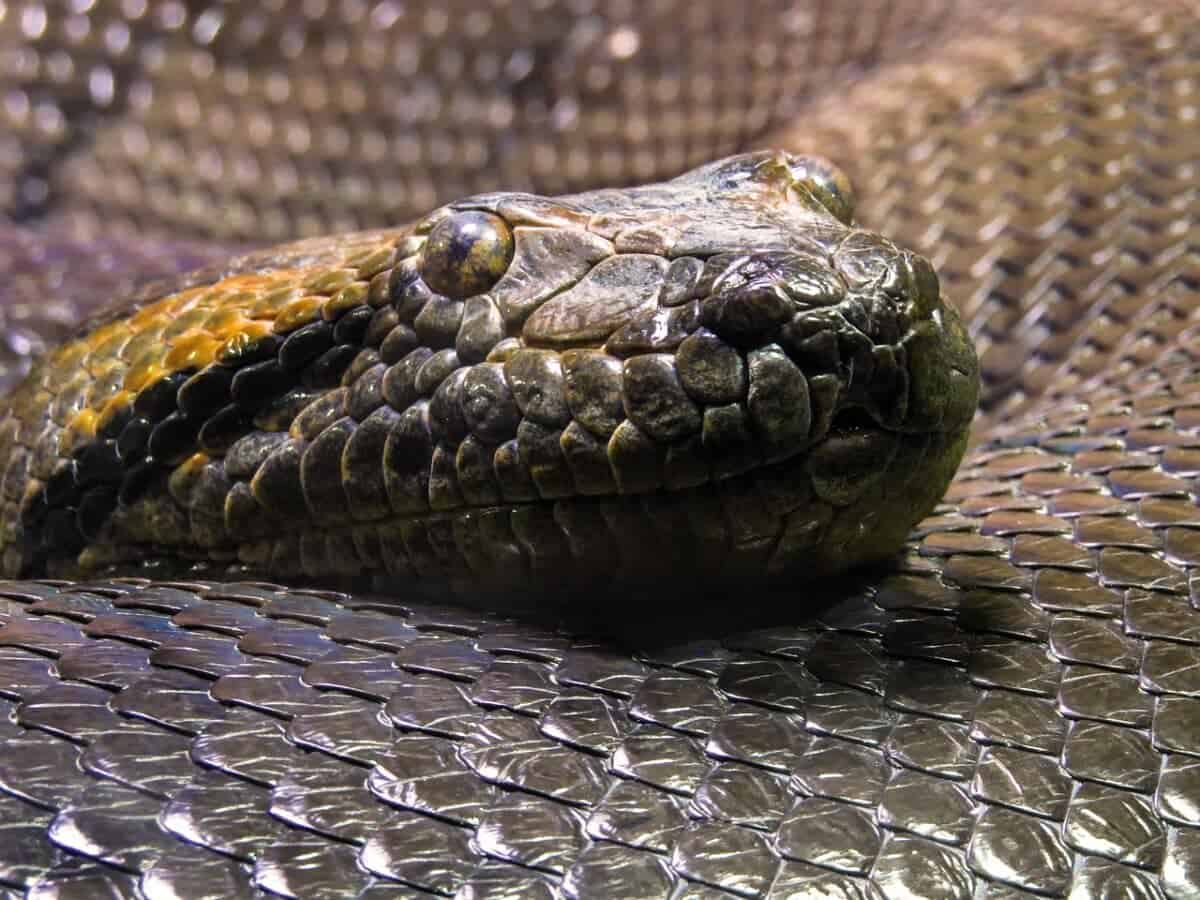
In conclusion, the anaconda’s sheer magnitude, paired with its intricate hunting strategies and incredibly diverse diet, make it a lethal predator. Its capacity to consume prey larger than itself is a vivid testament to the astonishing dynamics of life in the wild.
The video underscores the extent of unpredictability within the natural world, illustrating an incredible instance of snake cannibalism. It serves as a potent reminder of the strange and complex food chains that exist in the wild. We are reminded of nature’s remarkable, sometimes shocking, methods of survival.
These extraordinary occurrences force us to expand our understanding of wildlife behavior, reinforcing the respect and awe these phenomenal creatures deserve.
Thank you for reading this article about an anaconda regurgitating a smaller anaconda! We don’t need to look far to be fascinated by nature; take a look at some other recent animal news:
- Dogs Take Turns Going Down a Twisty Outdoor Slide
- Baby Orca Asks Humans For Help To Save Its Mother
- Brave Mom Saves Daughter From a Raccoon Attack
- Man Saves Pelican Choking on Fish at the Last Second - April 26, 2024
- Brave Monkey Saves Kitten Abandoned in a Well - April 25, 2024
- Octopus Stuck to Diver’s Back and Won’t Come Off - April 25, 2024

